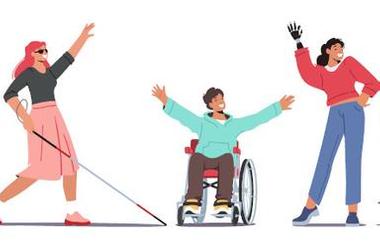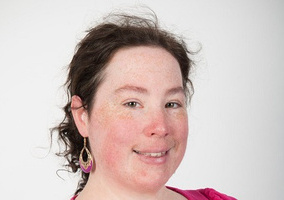On the face of it, the UK charity sector is a relatively good employer of disabled people.
According to government figures, 25% of civil society workers are disabled people, a proportion which has increased steadily over the past decade.
This is comparable to the around 23% of working-age adults who are disabled but greatly exceeds the 17% of employees who define as such in the wider economy.
Moreover, more charity leaders are identifying as disabled, with 25% of sector CEOs now reporting a “disability, learning difference or health condition”, up from 20% in 2022 and 17% the year before, according to ACEVO figures. This trend is in contrast to charities’ representation of people with other protected characteristics, many of which are decreasing and falling behind other sectors.
These are encouraging findings on disability inclusion, but do they reflect the reality for those with lived experience?
High employment in charity sector
Andrew Miller, the UK’s arts access champion who has held senior roles at several charities, says the sector leads the way in supporting disabled employees.
“I think charities offer more scope for disabled people to function well, in terms of the support that disabled people need in the workplace, but also in encouraging and supporting disabled people to declare their disability.”
He says an apparent rise in representation of disabled people in the sector in recent years could be due to there being “more people who are happy to share that information and declare that they have a disability, whether it be invisible or not”.
“The pandemic has really changed people’s approach to their health, and how that’s managed. And I think people are more willing to recognise and acknowledge that they have an impairment.”
Mike Nussbaum, trustee of the Shaw Trust and former chair of several other charities, says disabled people might be attracted to work for charities because of their social purpose but he says many private firms focus on employing disabled people as part of their corporate social responsibility agendas.
Shani Dhanda, recently voted the UK’s most influential disabled person and who has held several roles in the sector, says: “A reason disabled people might be drawn to it is because we know what it’s like to live in a world that isn’t designed for us. I’m three foot 10; there aren’t any clothes designed for bodies like mine, for example.
“To be able to open a charity feels like you’re working towards dismantling those barriers and I think that is very powerful. Or working in a charity, you’re much closer to being able to help people and to potentially help solve some of the world’s biggest challenges.”
Pandemic effects
A shift to remote working during the Covid-19 pandemic has benefited some disabled charity employees by making roles more accessible. However, the change has not affected the many disabled people employed in frontline roles. Moreover, some of those who are now working remotely are frustrated that the shift did not happen sooner.
Miller says: “Before the pandemic, many disabled people were being told by employers that they couldn’t work from home, that was just not possible. And of course, overnight in 2020 that all changed. We now have the mechanisms and the technology to be able to support very effective working from home and it’s something that I’ve taken advantage of. I thrive being able to do all the various roles that I do from home.
“In the non-charity sector, there has been more of a push to return to in-person environments. And of course, that might also be something that puts disabled people off working in those organisations.”
Dhanda says: “Work-from-home jobs were largely for people that have a degree-level qualification or above, generally speaking, while disabled people were overrepresented in jobs that are frontline facing, like caring or hospitality.
“For a lot of people, remote working has given them more flexibility. But now organisations are wanting people back in the office for a certain number of days, for example.
“This whole topic is really frustrating as a disabled person, because pre-pandemic, loads of disabled people wanted to work remotely and were not allowed to, even though it’s an employer’s duty to make reasonable adjustments. It might not be reasonable for every single person, but it is for a lot of people. Then the pandemic came along and as soon as it suited the majority, it happened overnight. Can you imagine how frustrating that is for disabled people who tirelessly asked for their rights to be met?”
Progressing to leadership roles
Miller says ACEVO’s figures on the proportion of charity CEOs reporting a disability, learning difference or health condition are “really impressive and I think that absolutely demonstrates that the charity sector is supporting disabled people”.
But he says: “In the micro world of arts and culture charities, we see fewer disabled leaders – although opportunities are opening up, particularly where job-shares are coming in more frequently. Job-shares, I think, enable people with impairments who would otherwise be put off by the full-on commitment.
“There are also very specific issues around disability and leadership in that disabled people have to spend a considerable amount of time addressing their own health needs. Doing a full-time job on top of that is quite a big ask. And where that job has a lot of responsibility and pressure it is an even greater ask and many disabled people, despite having many of the attributes of leadership, will look at that and back off.”
Disability Research UK (DRUK) has just announced a campaign to increase funding for disabled people-led organisations.
Miller praises DRUK for being a disabled people-led organisation itself and says its campaign represents a change in attitudes. “There’s been a number of disabled-recipient charities which have not had leadership or good representation from disabled people.
“I think we’re moving away, as a society, from the position of that being ok. And I think it’s more generally understood that for these charities to really be effective, they need to have the lived experience of the people they are there to serve at the highest levels.”
Dhanda agrees that the move to more disabled people leading charities is positive. “But I think we should recognise where we are. We just don’t have those people at the moment; we have to develop those pipelines of talent. We have to encourage people to want to do that too, because if you upskill people or you give them the skills that they need, there’s no guarantee that they’re going to stay in this sector, either. They’re going to get paid more to do something else. When it’s so expensive to just exist as a disabled person, you can’t really blame people.”
Civil Society research last year found that just 4% of large charities currently report on the disparity in average pay between their disabled and non-disabled employees. Organisations are not legally required to report their disability pay gap but Dhanda says more charities should do so voluntarily. “Every organisation, every charity should be doing it, but especially disability-led or run organisations. I’m sick of this narrative that everything has to be mandated for people to do something. You could do it now.”
Supporting disabled trustees
While there is some data on disability representation among charity staff and chief executives, there is a lack of similar evidence around trustee diversity. But in 2021, Getting on Board reported that representation of disabled people on charity boards was likely to be low.
Financial education charity Money4YOU has campaigned in recent years for registered charities to be compelled to report on the diversity of their trustees, including disability, to get a fuller picture.
Nussbaum says there are barriers to becoming trustees in the first place. “A number of people with particular disabilities are often quite isolated. Therefore, they don’t get the experience sufficient to be trustees. 75% of people who are registered blind or partially sighted actually never get employment.”
He has found accessibility an issue on some charity boards. “I’m registered blind, a guide-dog owner, so accessibility of board papers and that sort of thing is always an issue. And I always find I have had to, even in the charity sector, educate people as to what I need.
“Dashboards with charts and pie charts are wonderful. But if you can’t see them, you need the narrative that goes with them.”
Dhanda, meanwhile, says that it is important for charities to support disabled trustees to voice their opinions on boards. “Often I’m the only disabled, non-white person on the board, and that’s not ok. And then the burden always falls on me to do all the heavy lifting. It’s a lot of explaining, of giving context, because it won’t be their lived experience.”
She recalls a time when she was criticised by fellow trustees for using “strong” language to describe her experiences as a disabled person. “On one hand, you’re being asked to be really vocal and honest, and then when you are, it’s like: ‘Oh, you’re making us feel uncomfortable’. I'll never claim to represent all disabled people in anything that I do, which is why it’s really important that you have a real mix of people.”
Trustee remuneration
Dhanda supports more freedom for charities to pay disabled trustees for their time. “I joined a trustee board quite young, around mid-20s, and it was definitely because I wanted to be part of the change that I wanted to see in society. I thought that that would be a good way for me to try to do that, as well as to get experience and build my network.
“I get approached a lot to be part of different charities but it’s a bit of a doubleedged sword because it’s not paid. Not many disabled people will be able to do that.”
Miller also supports disabled trustees being remunerated for their time and criticises the “very rigid rules” the Charity Commission has on charities doing so.
“That’s something it really needs to look at to make its processes more equitable for disabled people and other people from minority communities, because it definitely acts as a block on the ability of these organisations to cover the costs of people’s time. When you’re managing a disability and doing a full-time job, giving voluntary work on top of that is a big ask.”
Rob Preston is news editor at Civil Society
Related Articles












